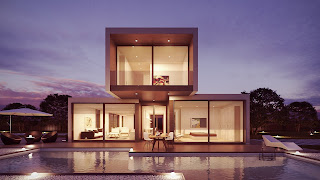Precast concrete homes are an innovative and sustainable alternative to traditional home construction methods. The homes are built with precast concrete panels that are manufactured in a controlled environment and then transported to the building site for assembly. This method offers several benefits over traditional wood-frame construction, including increased durability, energy efficiency, and reduced construction time. In this article, we will explore the advantages of precast concrete homes and how they are constructed.
Increased Durability
One of the key advantages of precast concrete homes is their increased durability. Concrete is a non-combustible material that is resistant to fire, insects, and weather-related damage, making it an ideal choice for building homes that will last for generations. Additionally, concrete has a high thermal mass, which helps to regulate indoor temperature and reduces the need for air conditioning and heating.
Energy Efficiency
Precast concrete homes are also highly energy efficient. The thick concrete walls provide excellent insulation, reducing heat loss in the winter and heat gain in the summer. This can result in significant energy savings, as well as increased comfort for homeowners. Additionally, the tight construction of precast concrete homes helps to reduce air infiltration, which can further reduce energy usage.
Reduced Construction Time
Another benefit of precast concrete homes is the reduced construction time. The precast panels are manufactured off-site, which reduces the amount of time and labor required on the building site. This also helps to reduce waste and minimize the impact of construction on the surrounding environment. Once the panels are transported to the building site, they can be assembled relatively quickly, allowing homeowners to move in sooner.
Design Flexibility
Precast concrete homes can be designed and customized to meet the specific needs and tastes of homeowners. The panels come in a variety of sizes and shapes, making it possible to create homes with unique and custom designs. Additionally, precast concrete homes can be finished with a variety of materials, such as stucco, brick, or stone, to create a wide range of architectural styles.
Improved Safety
Precast concrete homes are also safer than traditional wood-frame homes. The non-combustible nature of concrete means that homes are less likely to catch fire, and the strong structure of precast concrete homes can withstand high winds and earthquakes. Additionally, the tight construction of precast concrete homes helps to reduce the risk of indoor air pollution, improving the overall health and safety of the home.
In conclusion, precast concrete homes offer several benefits over traditional home construction methods. They are more durable, energy efficient, and reduce construction time, making them an attractive option for homeowners. Additionally, precast concrete homes can be designed and customized to meet individual needs and tastes, and are safer and more sustainable than traditional homes. By choosing precast concrete homes, homeowners can enjoy the benefits of a high-quality, sustainable, and safe home for generations to come.
News from all over on Cement Markets, Cement Marketing, Sales Consulting, Marketing Consulting for the Cement Marketing Consultant, Cement Market Consultant.
Wednesday, February 15, 2023
Precast Concrete Homes: An Overview
Subscribe to:
Post Comments (Atom)

No comments:
Post a Comment